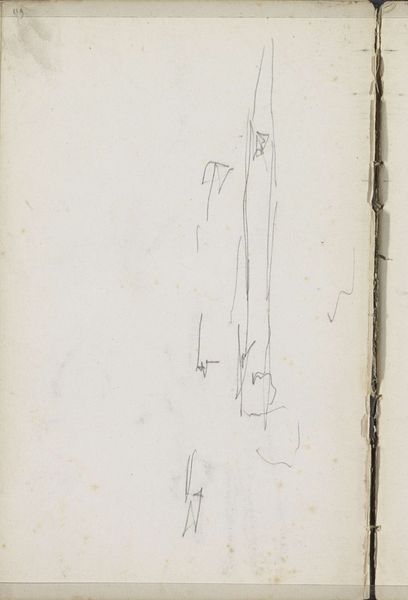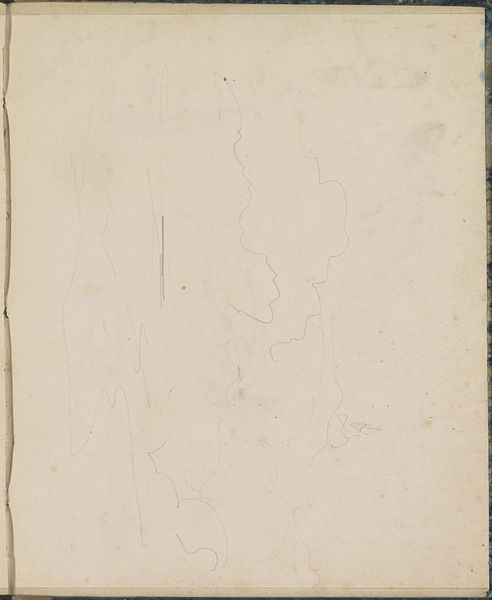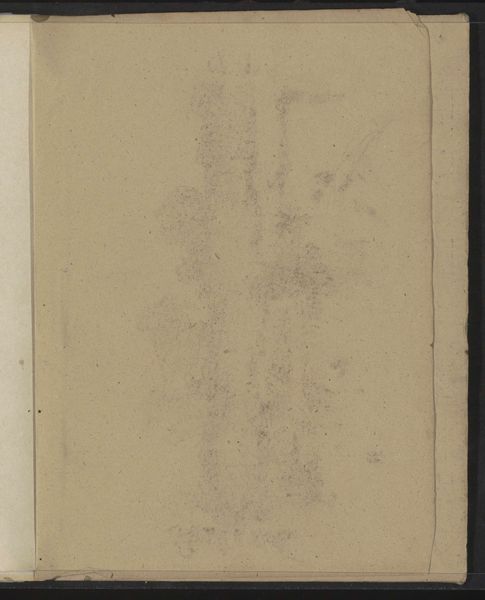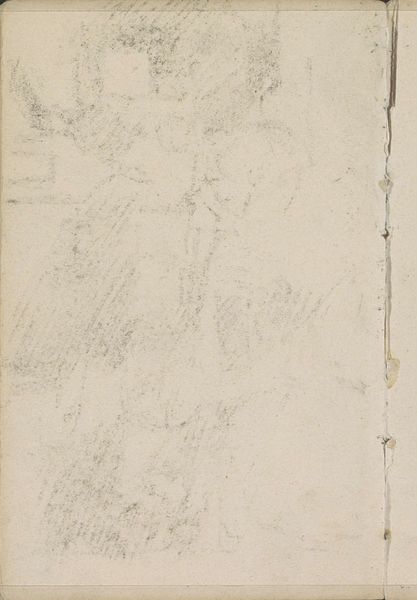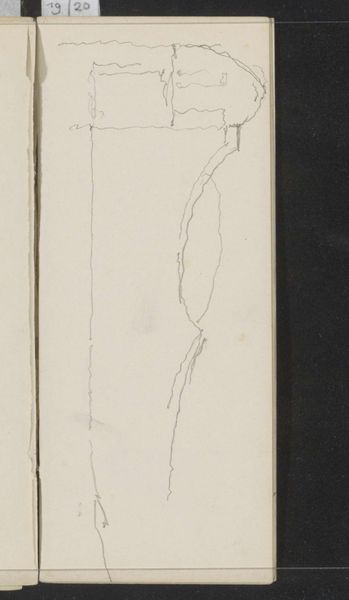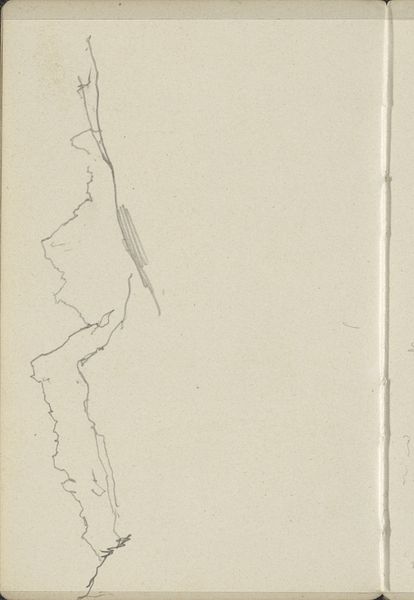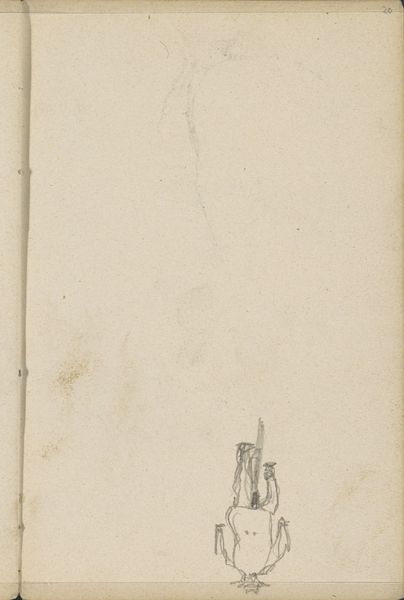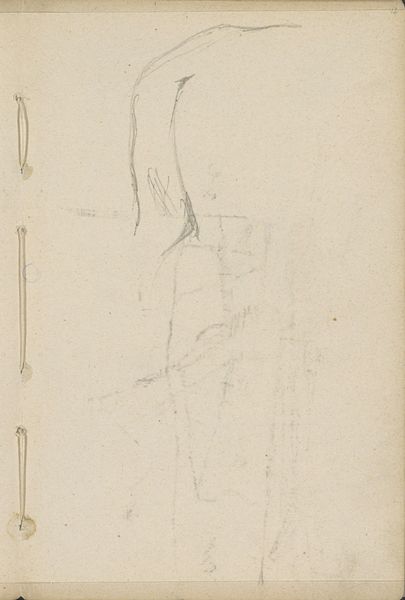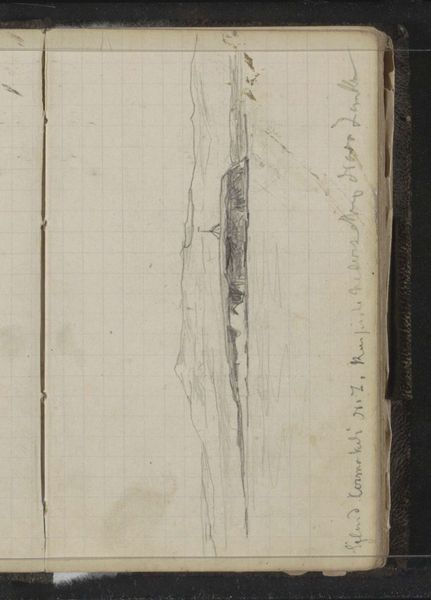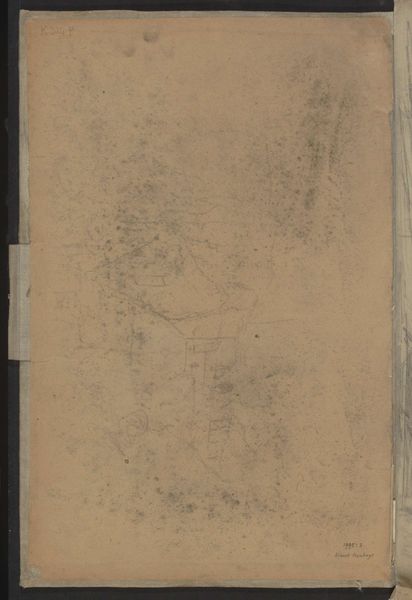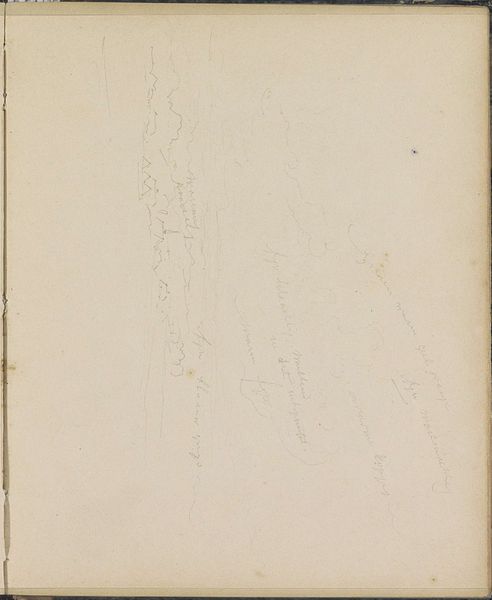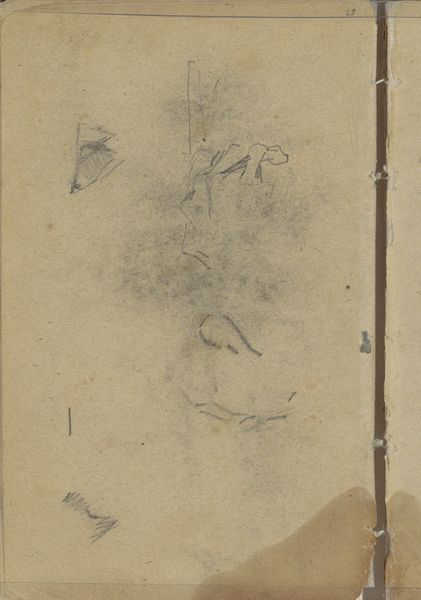
drawing, paper, pencil, graphite
#
drawing
#
pencil sketch
#
landscape
#
paper
#
pencil
#
line
#
graphite
Copyright: Rijks Museum: Open Domain
Curator: Here we have George Hendrik Breitner’s “Studie, mogelijk van een landschap,” which translates to "Study, possibly of a landscape," created between 1881 and 1883. It's a graphite and pencil drawing on paper, currently held at the Rijksmuseum. Editor: Immediately striking. Stark, even. Those attenuated lines, suggesting trees perhaps, possess an undeniable, quiet strength. You can almost feel the tooth of the paper under the graphite. It feels very immediate and personal. Curator: Breitner was working during a period of intense industrialization in the Netherlands. Do you think this starkness reflects the societal shifts? The anxiety, even, of urbanization bearing down on the landscape? Editor: Perhaps. But looking at the application of the pencil—the swiftness of the marks, the variable pressure—it also evokes the physical act of *drawing*. How he utilized those specific pencils in hand. I'm wondering what materials were most readily available and whether or not they had bearing on such pared down strokes...the labor invested versus the impact of this efficient sketching. Curator: That’s a valid consideration. It also makes me consider who would have had access to creating such a work at this time. Was Breitner intentionally creating something that challenged the art norms of his day, democratizing representation by embracing something seemingly incomplete or mundane? Editor: Incomplete suggests deficiency. But that immediacy I described speaks to the ready materials on hand and how those could have been put to efficient use in making landscape artwork accessible by its design as such...to a wider, more immediate market, so to speak. Curator: I understand. Seeing the means as directly impactful is something worth discussing within the context of the piece. What is the societal influence of access, materials, labor... Editor: Exactly! It begs us to analyze how artistic expression gets materially realized within and through the tools we literally touch. It also gives me pause and makes me want to reach out and take up a pencil as quickly as possible. Curator: It invites an analysis beyond purely aesthetic terms, questioning the social and economic forces influencing both production and reception, indeed.
Comments
No comments
Be the first to comment and join the conversation on the ultimate creative platform.

